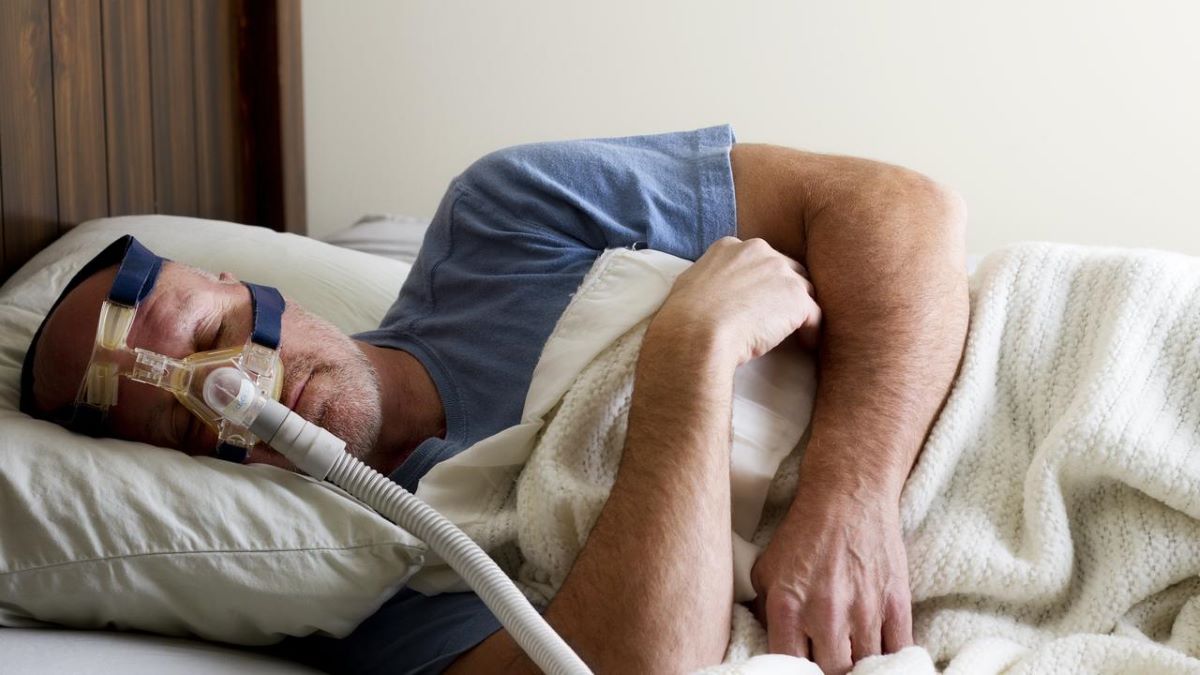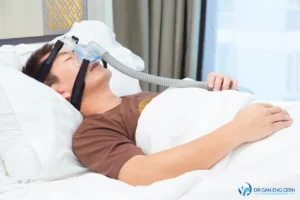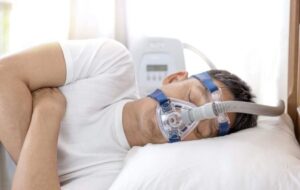What Is a Sleep Study and Why Is It Important in Sydney?
A sleep study, medically known as polysomnography, is a comprehensive diagnostic test that monitors your body’s functions throughout the night to identify sleep disorders. This overnight examination tracks brain waves, breathing patterns, heart rhythm, oxygen levels, and body movements whilst you sleep.
Sleep disorders affect a significant portion of Sydney’s population. Obstructive sleep apnoea impacts approximately 1 in 4 Australian adults, with snoring affecting even more residents across the metropolitan area. These conditions disrupt normal sleep architecture and prevent restorative rest.
Untreated sleep disorders carry serious health consequences:
- Cardiovascular risks: Elevated blood pressure, heart disease, and increased stroke likelihood
- Metabolic complications: Higher diabetes risk and weight management difficulties
- Cognitive impairment: Memory problems, reduced concentration, and slower reaction times
- Mental health challenges: Depression, anxiety, and mood disturbances
The importance of sleep study lies in its diagnostic precision. Without proper testing, sleep apnoea and related conditions often go undetected for years whilst silently damaging your health. A sleep study Sydney provides objective data that enables specialists to confirm diagnoses, assess severity, and develop targeted treatment plans. This evidence-based approach ensures you receive appropriate interventions rather than guesswork, potentially preventing life-threatening complications before they develop.
How Do Overnight Sleep Tests Detect Sleep Apnea and Snoring?
Overnight sleep tests use a method called polysomnography to get a complete view of what happens in your body while you sleep. These tests look at several body functions at the same time to find out if you have sleep apnea or snoring, both of which involve interruptions in breathing.
What Do Overnight Sleep Tests Measure?
During an overnight sleep test, the following key factors are measured:
- Brain activity: This is done using a technique called electroencephalography (EEG) to understand different stages of sleep.
- Breathing patterns: Sensors placed in your nose and bands around your chest and abdomen will help track how you’re breathing.
- Heart rate: An electrocardiogram (ECG) will be used to keep an eye on your heart rate.
- Blood oxygen levels: A device called a pulse oximeter will be used to check the oxygen levels in your blood by placing it on your fingertip.
- Body movements: Sensors on your legs and video recording will be used to monitor any movements you make during sleep.
How Are Sensors Attached for the Test?
When you go for an overnight sleep test, trained technicians will attach small electrodes to specific areas of your body using medical adhesive. Here’s how the sensor placement process works:
- Electrodes are placed on your scalp, face, chest, and limbs to capture brain activity and muscle movements.
- Elastic belts are wrapped around your chest and abdomen to measure how much air you’re taking in and expelling with each breath.
- A nasal cannula is used to detect airflow through your nose.
How Does Data Collection Happen?
Throughout the night, these sensors will continuously send information about your body’s activities back to a computer system. This data collection process is crucial as it allows us to create a detailed record of various aspects of your sleep such as:
- Different stages of sleep (light vs deep)
- Any disruptions in breathing patterns
- Changes in heart rate or blood oxygen levels
What Happens Next?
Once all the data has been collected from the overnight sleep test, it will be carefully examined by sleep specialists who are experts in this field. They will look for two main things:
- Apneas: These are complete pauses in breathing lasting 10 seconds or more.
- Hypopneas: These refer to partial reductions in airflow during sleep.
The frequency at which these events occur per hour is known as the Apnoea-Hypopnoea Index (AHI). It helps determine how severe someone’s case of sleep apnea might be.
How Is Snoring Detected?
In addition to looking at apneas and hypopneas, detecting sleep apnea also involves paying attention to other factors such as:
- Oxygen desaturation: This refers to drops in oxygen levels that can happen when someone stops breathing temporarily during their sleep.
- Arousal patterns: These are changes in brain activity that indicate someone is waking up or transitioning between different stages of slumber.
- Snoring sounds: Microphones placed near where you sleep can pick up any loud noises made while you’re asleep indicating possible snoring episodes.
By combining all this information together—breathing disruptions + oxygen desaturation + arousal patterns + snoring sounds—sleep specialists get a comprehensive understanding of what’s happening with their patients’ nights’ rest. This approach ensures accurate detection not only for diagnosing underlying issues but also specifically targeting cases involving chronic snorers or those suspected having obstructive type forms related conditions like OSA (Obstructive Sleep Apnea).
What Are the Differences Between In-Lab and Home-Based Sleep Studies?
In-lab sleep study Sydney facilities conduct full polysomnography with comprehensive monitoring equipment, while home-based sleep tests use simplified portable monitoring devices for convenience. Both methods effectively diagnose sleep disorders, though they differ significantly in scope and setting.
Equipment and Monitoring Scope
In-clinic overnight polysomnography employs extensive sensors tracking brain waves (EEG), eye movements, chin muscle activity, leg movements, heart rhythm, airflow, chest and abdominal effort, and blood oxygen saturation. A sleep technician monitors the patient throughout the night, adjusting equipment as needed.
Home testing options utilise compact devices measuring fewer parameters—typically airflow, breathing effort, oxygen levels, heart rate, and body position. Some tests incorporate actigraphy, a wrist-worn device estimating sleep-wake patterns through movement detection.
Patient Suitability and Selection
Patients with suspected moderate to severe obstructive sleep apnea without complicating medical conditions suit home studies. Complex cases involving suspected central sleep apnea, periodic limb movements, narcolepsy, or significant cardiovascular disease require in-lab assessment for accurate diagnosis.
Benefits and Limitations
Home-based sleep tests offer:
- Natural sleep environment
- Lower cost
- Greater scheduling flexibility
- Medicare rebates when ordered by specialists or GPs
In-lab studies provide:
- Comprehensive data collection
- Immediate technical support
- Diagnosis of multiple sleep disorders
- Video recording for movement analysis
Home tests may miss certain sleep disorders and occasionally produce inconclusive results requiring repeat testing.
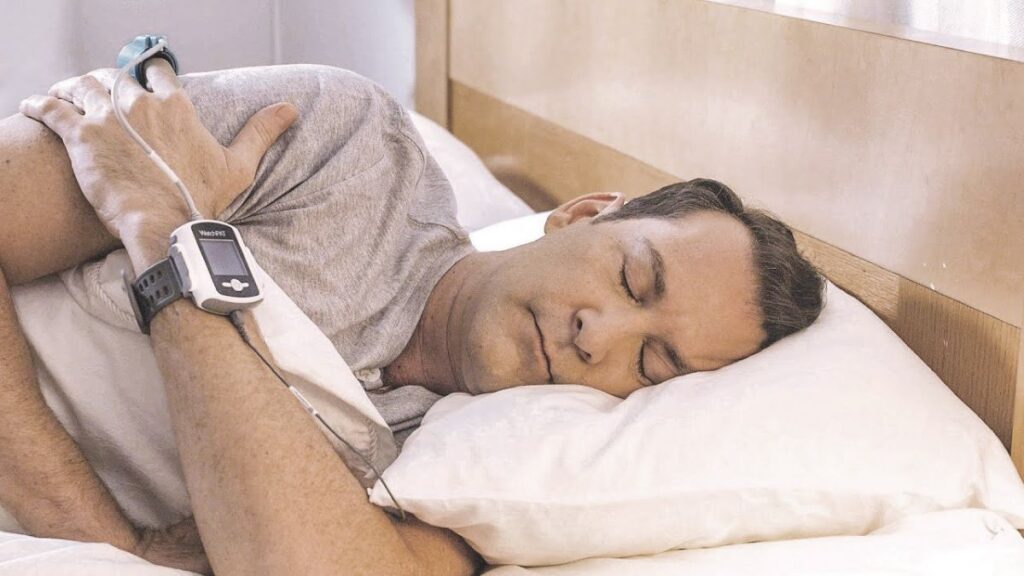
What Is the Process for Undergoing a Sleep Study in Sydney?
The sleep study process Sydney begins with obtaining a referral from your GP or specialist, which is mandatory for accessing diagnostic testing. Your doctor will assess your symptoms—such as loud snoring, daytime fatigue, or witnessed breathing pauses—to determine whether a sleep test is appropriate for your situation.
Once referred, you’ll attend an initial consultation where a sleep specialist reviews your medical history, sleep patterns, and specific concerns. This appointment helps determine whether an in-lab or home-based test suits your needs. The clinic then schedules your overnight test based on availability and your preferences.
Preparation instructions are straightforward but essential for accurate results:
- Wash your hair thoroughly without applying conditioner, oils, or styling products
- Remove all nail polish from fingers and toes
- Avoid caffeine and alcohol on the test day
- Take regular medications unless advised otherwise
- Bring comfortable sleepwear and personal items
During the overnight monitoring procedure, trained technicians apply sensors to your scalp, face, chest, and limbs. These devices track brain waves, breathing, heart rhythm, oxygen levels, and body movements throughout the night. For home tests, you’ll receive detailed instructions on attaching portable equipment yourself.
You’ll be woken early for sensor removal, typically around 6:00 AM. The collected data undergoes thorough analysis by sleep specialists, with results discussed during a follow-up appointment where treatment options are explored based on findings.
How Do Sleep Specialists Analyse Data From Overnight Tests to Diagnose Disorders?
Sleep specialists examine the recorded physiological data using sophisticated software that tracks every breathing event, oxygen fluctuation, and sleep stage throughout the night. The analysis focuses on identifying specific patterns that indicate sleep-disordered breathing.
Key metrics in sleep data analysis include:
- Apnoea-Hypopnoea Index (AHI): Counts the number of complete breathing pauses (apnoeas) and partial reductions (hypopnoeas) per hour of sleep
- Oxygen desaturation levels: Measures drops in blood oxygen that occur during breathing disruptions
- Sleep architecture: Evaluates time spent in different sleep stages and frequency of awakenings
- Body position correlation: Determines if breathing problems worsen in specific sleeping positions
Specialists look for apnoeas lasting 10 seconds or longer and hypopnoeas causing at least 3% oxygen desaturation. An AHI of 5-15 events per hour indicates mild obstructive sleep apnea, 15-30 suggests moderate severity, whilst over 30 confirms severe OSA requiring immediate treatment.
The team correlates these objective findings with reported symptoms like loud snoring, witnessed breathing pauses, morning headaches, and excessive daytime sleepiness. This comprehensive approach distinguishes between obstructive sleep apnoea requiring medical intervention and primary snoring without significant health consequences. Diagnosing obstructive sleep apnoea accurately depends on matching physiological evidence with clinical presentation.
What Treatment Options Are Available After Diagnosing Sleep Apnea or Snoring?
CPAP therapy Sydney clinics offer the most effective treatment for moderate to severe obstructive sleep apnea. Continuous Positive Airway Pressure (CPAP) machines deliver pressurized air through a mask worn during sleep, keeping airways open and preventing breathing interruptions. Modern CPAP devices are quieter and more comfortable than older models, with features like heated humidification and auto-adjusting pressure settings to enhance compliance.
Oral appliances for snoring provide an alternative for mild to moderate cases or patients who cannot tolerate CPAP. These custom-fitted devices reposition the jaw and tongue to maintain an open airway during sleep. Mandibular advancement splints are the most common type, designed by dental sleep specialists to ensure proper fit and effectiveness.
Treatment options for sleep apnea extend beyond these primary interventions:
- Positional therapy for patients whose apnea occurs mainly when sleeping on their back
- Weight loss programmes to reduce excess tissue around the airway
- Surgical interventions such as uvulopalatopharyngoplasty (UPPP) for severe anatomical obstructions
- Lifestyle modifications including alcohol reduction and smoking cessation
Sleep specialists in Sydney develop personalized treatment plans based on apnea severity, patient anatomy, lifestyle factors, and individual preferences. Mild snoring without apnea may require only lifestyle changes, whilst severe OSA typically necessitates CPAP therapy combined with weight management strategies.
Where Can Patients Access Sleep Studies Across Sydney?
Options for bulk-billed sleep studies in Sydney have increased significantly, making diagnostic testing more accessible to patients from all socioeconomic backgrounds. Many clinics now offer services covered by Medicare when referred by a GP or specialist, eliminating out-of-pocket costs for eligible patients.
Clinics Offering Overnight Tests in Sydney Locations
The locations of clinics offering overnight tests in Sydney include both metropolitan and regional areas, ensuring convenient access regardless of where patients live. Major facilities operate in:
- Kogarah – serving the St George and southern suburbs
- Chatswood – accessible for North Shore residents
- Hornsby – covering upper North Shore and northern regions
- Marrickville – convenient for inner-west communities
- Miranda – servicing Sutherland Shire and surrounding areas
Selecting the Right Clinic
Choosing the right clinic depends on several practical factors:
- Geographic proximity: Reducing travel time before and after overnight testing is important, especially when appointments are scheduled early in the morning.
- Testing options: Patients should check whether facilities offer both in-lab polysomnography and home-based testing options, as this flexibility accommodates different medical needs and personal preferences.
- Service quality indicators: Look for specialist credentials, advanced equipment technology, and positive patient reviews to assess the quality of services provided.
- Appointment availability: Some clinics may have extended hours or weekend appointments, which can benefit individuals with demanding work schedules.
Confirming Bulk-Billing Availability
During your initial contact with the clinic, it is essential to confirm whether bulk-billing will be available for your sleep study. This step helps prevent any unexpected costs and ensures that the diagnostic process remains financially accessible to you.
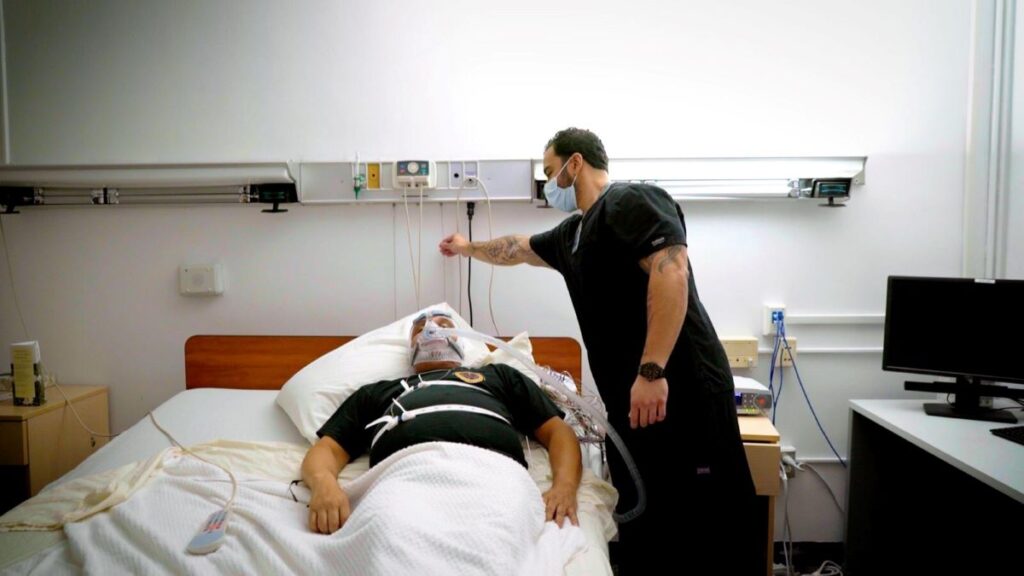
How Do Overnight Sleep Tests Improve Overall Health and Quality of Life?
Overnight sleep tests directly improve health by enabling accurate diagnosis and treatment of conditions that silently damage the body during sleep. The benefits of diagnosing sleep apnea extend far beyond better rest—untreated sleep disorders significantly increase risks for high blood pressure, heart disease, stroke, and type 2 diabetes.
Treatment following diagnosis produces measurable health improvements:
- Cardiovascular protection: CPAP therapy and oral appliances restore normal breathing patterns, reducing strain on the heart and blood vessels
- Metabolic regulation: Better sleep quality helps stabilise blood sugar levels and reduces diabetes risk
- Cognitive enhancement: Consistent oxygen flow during sleep improves memory, concentration, and decision-making abilities
- Mood stabilisation: Treating sleep apnea alleviates symptoms of depression and anxiety linked to chronic sleep deprivation
The improved quality of life after treatment becomes evident within weeks. Patients report enhanced daytime alertness, increased energy levels, and restored productivity at work. Partners also benefit from reduced snoring and fewer sleep disruptions.
Sleep Study Sydney: How Overnight Tests Detect Sleep Apnea and Snoring represents the first step towards reclaiming your health. These diagnostic tests provide the evidence needed to access effective treatments that protect against serious health complications whilst transforming daily wellbeing.
Ready to address your sleep concerns? Contact a Sydney sleep clinic today to arrange your overnight test and begin your journey towards healthier, restorative sleep.
More to Read : Sleep Study Geelong: Can You Book an At-Home Test on Weekends?
FAQs About Sleep Studies in Sydney
A sleep study, or polysomnography, monitors your brain, heart, breathing, and body movements overnight to diagnose sleep disorders like sleep apnea and snoring, helping prevent serious health complications.
2. How do sleep studies detect sleep apnea?
Sleep studies measure airflow, oxygen levels, and brain activity to identify pauses or reductions in breathing known as apneas and hypopneas.
3. What’s the difference between in-lab and home sleep studies?
In-lab studies use advanced monitoring equipment in a clinical setting, while home studies use portable devices for convenience and comfort.
4. Who needs a sleep study in Sydney?
Anyone experiencing loud snoring, daytime fatigue, morning headaches, or witnessed breathing pauses during sleep should consider a sleep study.
5. How should I prepare for a sleep study?
Avoid caffeine and alcohol on the test day, wash your hair without conditioner, remove nail polish, and wear comfortable sleepwear.
6. What happens after the overnight test?
Sleep specialists review the data to identify breathing disruptions and determine whether you have sleep apnea or another disorder.
7. What treatments are available for sleep apnea?
Treatment options include CPAP therapy, oral appliances, positional therapy, weight loss programs, and in some cases, surgery.
8. Are sleep studies in Sydney bulk-billed?
Yes, many Sydney clinics offer bulk-billed sleep studies covered by Medicare when referred by a GP or specialist.
9. How can a sleep study improve my health?
By diagnosing and treating sleep apnea, you can lower risks for heart disease, diabetes, and depression—while restoring energy, focus, and quality sleep.

